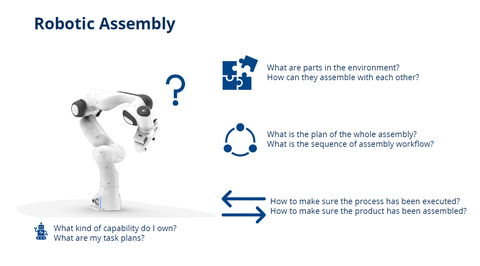Apr 20, 2022
Status presentation for Model-driven Robotic Assembly
Ms. Wanqi Zhao, project B4 (Fog Computing in DS-MSCs), has given her status lecture, which is traditionally scheduled at least one year before the defense of one's doctoral thesis, at the Chair of Software Technology (Prof. Aßmann).
Current volatile markets and customization demands call for a transition from the status quo of traditional supply chains to more dynamic and shorter-term supply networks. New business opportunities can emerge as modular units can be leased or shared between different supply chain members. The new concept of the software-defined mobile supply chain (SD-MSC) can provide a resilient, distributed, and modularized manufacturing mode. As an essential part of manufacturing, assembly processes demand production time and incur costs.
To implement this concept, incorporating robotics within the process can help build flexible and versatile assembly processes to save time and costs. However, current programming platforms have limitations and restrictions, especially in robotics. Models can provide support here. Models are representations, descriptions, and specifications of reality that can describe an infinite set of things and systems. Model-driven software development (MDSD) can provide a service-oriented component-based approach to handle numerous vexing system-level complexities to manipulate and decouple robotic knowledge from implementation technologies.
In this research, project B4 (Fog Computing in DS-MSCs) develops a multi-domain, extensible, and flexible architecture by proposing Robotic Assembly RAGs (RobotRAGs) using Relational Reference Attribute Grammars (Relational RAGs) to model robotic assembly lines. These Robotic Assembly RAGs includes three basic models: Robot Capability Model, Action Model, and Product Model. Also, it has an individual domain Constraint Model to help define constraints in and between these models. With this architecture, others can derive robotic assembly processes from designated products concerning these linked models and integrate them with the robot control platform.
Ms. Zhao received very positive feedback and further advice based on her status presentation at the Chair.

